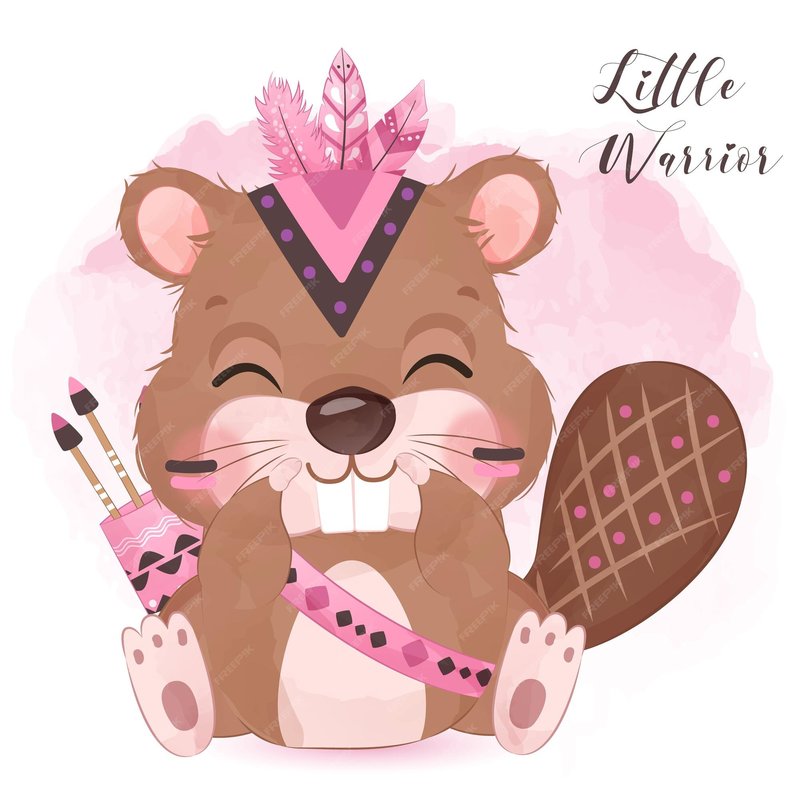
In folklore, beavers often take on significant roles, weaving together themes of community, sacrifice, and even playfulness. Think of them as tiny furry architects who not only shape their environments but also influence the cultures that admire them. So, let’s dive into the fascinating ways beavers have been portrayed in stories, art, and traditions around the world.
Beavers in Native American Folklore
Many Native American tribes hold beavers in high esteem, viewing them as wise and industrious animals. For example, in some stories, the beaver is considered a *creator*, a being who plays a crucial role in the formation of lakes and rivers. The idea is that when a beaver builds a dam, it not only creates a home but also transforms the landscape itself, providing habitats for other creatures. This transformation reflects the interconnectedness of nature, a common theme in many Indigenous cultures.
Moreover, beavers are often seen as symbols of community. In stories told around campfires, they exemplify teamwork and the importance of working together for a common goal. When a beaver sets about building its dam, it doesn’t just do it alone. Instead, these creatures often collaborate with family members, reinforcing the value of relationships and community support. This communal aspect resonates with many Indigenous beliefs, where familial bonds and cooperation are key.
In some tribes, the beaver is also a symbol of sacrifice, teaching the lesson that sometimes you must give up something for a greater good. In one tale, a beaver sacrifices its own tail to save the forest from destruction. This type of storyline encourages listeners to think about their actions and the impact they have on others.
Beavers in European Folklore
Across the pond, European folklore paints a different but equally rich image of the beaver. In medieval tales, beavers were often viewed as symbols of virtue, embodying the ideals of diligence and hard work. They were sometimes used as figures of caution, reminding people of the importance of being prepared and resourceful.
One popular story tells of a beaver that, after facing a harsh winter, learns to gather and store food more efficiently. This tale serves as a timeless reminder about planning for the future and the virtues of perseverance in the face of challenges.
Additionally, in some European cultures, beavers were linked to notions of healing and wisdom. The ancient belief was that beaver fat could cure ailments, leading these creatures to symbolize health and well-being. This portrayal shows that folks saw them as more than just animals; they were resources that could offer solutions to human problems, intertwining culture and the natural world in fascinating ways.
Beavers in Popular Culture
Fast forward to modern times, and beavers have made their way into popular culture, often serving as symbols of hard work and resilience. Movies, cartoons, and books depict beavers as adorable, relatable characters, often with a little bit of charm and humor. Think of *The Beavers*, a family-friendly animation that showcases their teamwork and engineering skills while also being entertaining for all ages.
Additionally, they show up in stories and animated series where their resourcefulness is highlighted. This representation not only entertains but also serves to instill values of determination and creativity in younger audiences. The little beaver becomes a role model, teaching kids that with a little ingenuity, they can tackle challenges and solve problems.
Beavers have also found a place in sports team mascots, especially with their associations to determination and community spirit. Teams often embrace the beaver as a symbol of hard work, perseverance, and team effort, connecting fans and players alike to the qualities these animals represent.
Beavers and Environmental Symbolism
Interestingly, beavers are also recognized as key players in environmental symbolism. Their natural behavior of building dams plays a vital role in ecosystems, promoting biodiversity and healthy water systems. In many cultures, this ecological role has led to beavers being seen as symbols of environmental stewardship and sustainability.
When beavers create wetlands, they help filter water and provide habitats for countless species. This has raised awareness about their importance in discussions around conservation. Some organizations even use the beaver as a mascot to advocate for environmental protection, reminding us of our shared responsibility to care for nature.
The notion of beavers as “ecosystem engineers” brings in an important aspect of modern discussions around climate change and biodiversity. Their role emphasizes how interconnected we all are with the environment and serves as a reminder that every species, no matter how small, can make a significant impact.
Beavers in Art and Literature
Art and literature have also embraced the beaver, often showcasing it in delightful and meaningful ways. From paintings capturing their natural beauty to poems celebrating their industrious nature, beavers have inspired creativity across various mediums.
In children’s literature, the beaver is a frequent character. Authors often craft stories around beaver protagonists that help teach lessons about friendship, cooperation, and the importance of hard work. For instance, in a charming tale, a young beaver learns how to build a dam and along the way discovers the value of asking for help from friends. These stories not only entertain but also instill important life skills in young readers.
In fine art, beavers have been depicted in various styles, symbolizing nature’s resilience and beauty. Artists often capture the intricate details of their fur and the majestic way they interact with their environment. These representations can invoke feelings of admiration for nature and encourage viewers to reflect on the delicate balance of ecosystems.
Global Perspectives on Beavers
While North American and European cultures have rich traditions surrounding beavers, other cultures have differing views. For instance, in some Asian cultures, beavers are less commonly mentioned, but when they are, they’re often seen as symbols of prosperity and creativity.
In Japan, although not native, beavers can symbolize the ability to adapt and thrive in various environments. Their industrious nature is often celebrated, reminding us that hard work can yield fruitful results no matter the circumstance.
Around the world, the beaver represents various ideals. From perseverance and teamwork to adaptability and transformation, different cultures place unique meanings on this small but mighty creature. Exploring these perspectives can deepen our understanding of global values and the ways nature intersects with human experience.
Beavers might seem like simple creatures, but their influence stretches far beyond their dam-building habits. Across cultures and throughout history, they have served as symbols of hard work, community, and environmental stewardship. Whether in folklore, popular culture, or art, beavers embody qualities that resonate with us as individuals and communities.
As we continue to tell stories about beavers, we celebrate not only their ecological contributions but also the profound lessons they teach. In a world that often rushes by, let’s take a moment to appreciate the beaver’s hard work and creativity, reminding us that every effort counts, and that together, we can build wonderful things.

